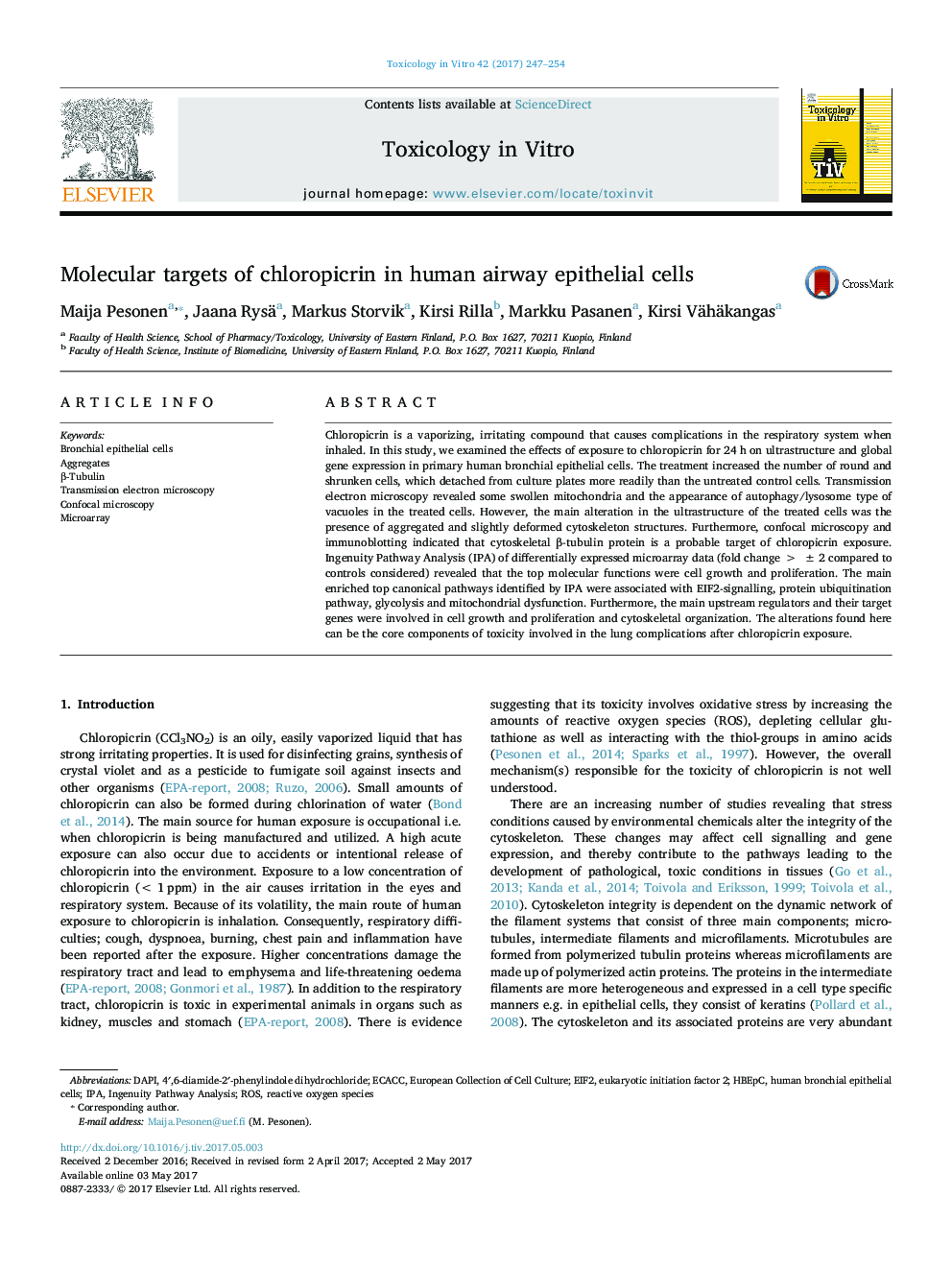| Article ID | Journal | Published Year | Pages | File Type |
|---|---|---|---|---|
| 5562645 | Toxicology in Vitro | 2017 | 8 Pages |
â¢Molecular responses of human airway epithelial cells to chloropicrin were examined.â¢The treatment altered cellular ultrastructure.â¢Chloropicrin decreased expression of cytoskeletal β-tubulin protein.â¢The main canonical pathways were associated with EIF2-signalling and mitochondria.
Chloropicrin is a vaporizing, irritating compound that causes complications in the respiratory system when inhaled. In this study, we examined the effects of exposure to chloropicrin for 24 h on ultrastructure and global gene expression in primary human bronchial epithelial cells. The treatment increased the number of round and shrunken cells, which detached from culture plates more readily than the untreated control cells. Transmission electron microscopy revealed some swollen mitochondria and the appearance of autophagy/lysosome type of vacuoles in the treated cells. However, the main alteration in the ultrastructure of the treated cells was the presence of aggregated and slightly deformed cytoskeleton structures. Furthermore, confocal microscopy and immunoblotting indicated that cytoskeletal β-tubulin protein is a probable target of chloropicrin exposure. Ingenuity Pathway Analysis (IPA) of differentially expressed microarray data (fold change > ± 2 compared to controls considered) revealed that the top molecular functions were cell growth and proliferation. The main enriched top canonical pathways identified by IPA were associated with EIF2-signalling, protein ubiquitination pathway, glycolysis and mitochondrial dysfunction. Furthermore, the main upstream regulators and their target genes were involved in cell growth and proliferation and cytoskeletal organization. The alterations found here can be the core components of toxicity involved in the lung complications after chloropicrin exposure.
